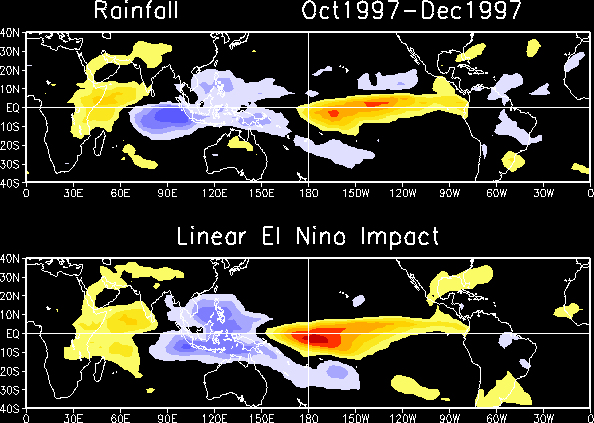Assessing El Niño Impact on Climate Anomalies
 This page allows the user to plot current
or historical climate anomalies,
and compare those to the linear signal associated with El Niño.
This page allows the user to plot current
or historical climate anomalies,
and compare those to the linear signal associated with El Niño.
Monthly mean geopotential height at 500 mb is available from January 1948 thru April 2002, while Outgoing Longwave Radiation (OLR) is available from June 1974 to April 2002. By selecting a variable and a time-averaging interval, the observed anomaly for that period is calculated. Anomalies are computed using a 1958-1997 base climatology (1974-1997 for OLR). The OLR anomalies are displayed as rainfall anomalies in mm/day using the Arkin and Meisner (1987) empirical relation.
El Niño's contribution to the observed anomalies is determined by regressing the historical monthly anomalies of each variable onto the equatorial Pacific EOF1 SST time series for 1948-2002 (1974-2002 for OLR). For each variable, there are 12 regression maps, one for each calendar month. For the time-averaging period selected by the user, the corresponding monthly regressions are weighted by the amplitude of the EOF1 principal component and then linearly averaged.
Circulation data are from the NCEP/NCAR reanalysis.
![]() Go here
to see the current state of El Niño
Go here
to see the current state of El Niño
 For questions regarding the impact assessments, please
e-mail Martin Hoerling at
martin.hoerling@noaa.gov.
For questions regarding the impact assessments, please
e-mail Martin Hoerling at
martin.hoerling@noaa.gov.
